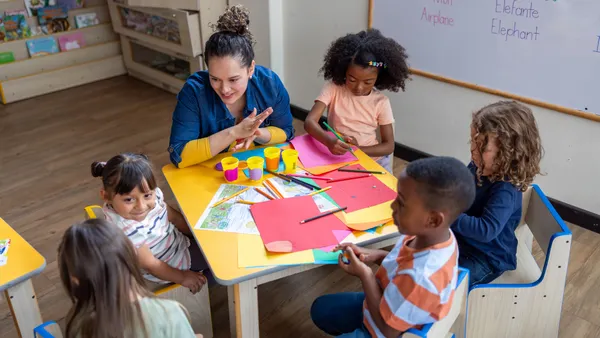Andrea Teske teaches English and creative writing at Insight School of Washington. In 2015, she was selected Teacher of the Year at her school by the administration, staff and students.
Even if school moves online in the fall, teachers and students don’t have to lose their connections to one another.
My favorite part of online teaching is how connected I feel with each of my students. I know it may seem counterintuitive to some, but whether it is through video chat, phone or email, the virtual classroom offers me more time to connect with every student. This has empowered me to create meaningful relationships that encourage their success and enrich my career.
As a teacher for the online Insight School of Washington, I support a diverse group of students from across the state, from the overachievers to those who want to be anywhere else. You name it, I have it.
Motivating students and bonding classmates together in a virtual classroom happens every day at our school, but it does look different from a brick-and-mortar setting. For teachers who will be online in the fall and are wondering how they can foster a connection with their students from a safe and social distance, here are my three tips to follow.
Capitalize on classroom energy
Capitalize on the energy your class gives you. If one student loves writing, use their enthusiasm to inspire the ones who aren’t as passionate. Finding the students who have a natural inclination to help is so important.
For the students who struggle to write, challenge them to change their minds. Often, there is a reason. Maybe they were told they couldn’t spell, or maybe they feel paralyzed by the fear of failing. Digging deeper to understand the students in your classroom is crucial. Even though you are not meeting face-to-face, make sure you are still talking with one another. Let them know they are more than just a square on a screen.
Confront and enable tough conversations
While teachers are facilitators, we are also role models for our students. For some, the information they hear on the news or events they see happening in their community are overwhelming. You might be the only adult in that student’s life who is willing to address the ongoing protests and rising coronavirus cases.
For that reason, it’s critical to talk about what is happening and frame it by offering context and perspective. I don’t want my students to lose hope. I want them to feel empowered to speak up so they create change or get the support they need.
My strategy when approaching these conversations is to demonstrate empathy. There is no room for judgment. Emotional wellness is crucial to learning. If students don’t know how to identify and cope with an emotion they are feeling, it can disrupt their ability to learn and create discord in the classroom.
Encourage students to express themselves
Let students express themselves, and they will reveal to you who they are and how they think. That expression can be just as powerful online as in the brick-and-mortar classroom.
Encourage students to journal and practice writing their thoughts on what’s going on in their community and across the world. Invite diverse views so students realize it is okay to have a different perspective.
As teachers, we must work to facilitate the discussions, but not to influence the direction. Let students lead the conversation. You are there to listen and provide comfort. In turn, this can calm their anxieties and mitigate distractions from learning.
Making the transition to teaching and learning online right now can add to an already overwhelming amount of stress for teachers, students and families. By practicing these tips, and more, you will be better prepared for whatever this new online world has to offer and be a better teacher for it.









